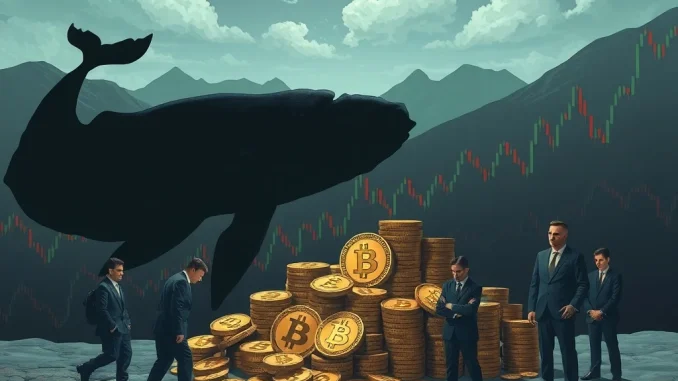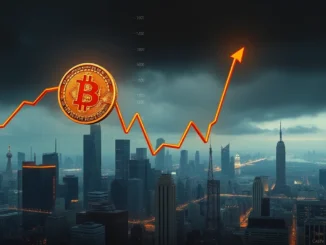
Dive into the latest BTC market trends shaping the cryptocurrency landscape. Data reveals a significant shift in who holds Bitcoin, as large individual holders offload substantial amounts while institutional players aggressively buy.
What Are Bitcoin Whales Doing?
According to data from 10x Research, shared by unfolded on X, Bitcoin whales have been net sellers over the past year. These large holders, often defined as entities holding a significant amount of BTC, have sold off more than 500,000 BTC. At recent prices, this amounts to a staggering figure exceeding $50 billion.
This selling pressure from long-term large holders is a notable development and suggests potential profit-taking or reallocation strategies among this group.
Institutional Bitcoin Accumulation: A Counter Trend
In stark contrast to the whale activity, institutional investors have been on a significant buying spree. This group includes Bitcoin ETFs, corporate treasuries holding BTC on their balance sheets, and other large funds. Over the same one-year period, these institutions have accumulated nearly 900,000 BTC.
This substantial inflow has boosted their total holdings to approximately 4.8 million BTC. This trend of institutional Bitcoin accumulation highlights growing mainstream adoption and confidence in Bitcoin as an asset class.
Why This Matters for Crypto Market Analysis
The simultaneous selling by whales and buying by institutions presents a fascinating dynamic in the crypto market analysis. Historically, whale movements could significantly impact price due to their large holdings. However, the consistent, large-scale buying from institutions provides a counter-force.
Here’s a quick look at the contrast:
- Whales: Sold > 500,000 BTC ($50B+)
- Institutions: Accumulated ~ 900,000 BTC
- Institutions’ Total Holdings: ~ 4.8 million BTC
This shift suggests that ownership is moving from early adopters and large individual players to regulated, traditional financial entities. This could have long-term implications for market stability and price discovery.
Understanding Bitcoin Price Dynamics
The interplay between these two forces is crucial for understanding current and future Bitcoin price dynamics. While whale selling can exert downward pressure, the consistent demand from institutions provides a strong underlying support level.
The significant accumulation by institutions indicates increasing demand from a different class of investor, one that often has longer investment horizons and larger capital pools. This could potentially absorb the selling pressure from whales and pave the way for future price appreciation if institutional demand continues.
What Does This Mean for the Average Investor?
This data suggests that the market structure is evolving. While individual whale moves can still cause short-term volatility, the increasing presence of institutions indicates a maturing market. This shift could lead to different market behaviors compared to previous cycles dominated more by retail and early large holders.
Summary: A Shifting Landscape
In conclusion, the past year has seen a notable redistribution of Bitcoin supply. Bitcoin whales have reduced their exposure by selling hundreds of thousands of BTC, while institutional Bitcoin accumulation has absorbed this supply and significantly increased their overall holdings. This ongoing shift is a key factor in current BTC market trends and offers valuable insight for any crypto market analysis, potentially influencing future Bitcoin price dynamics as the market matures and traditional finance plays a larger role.



